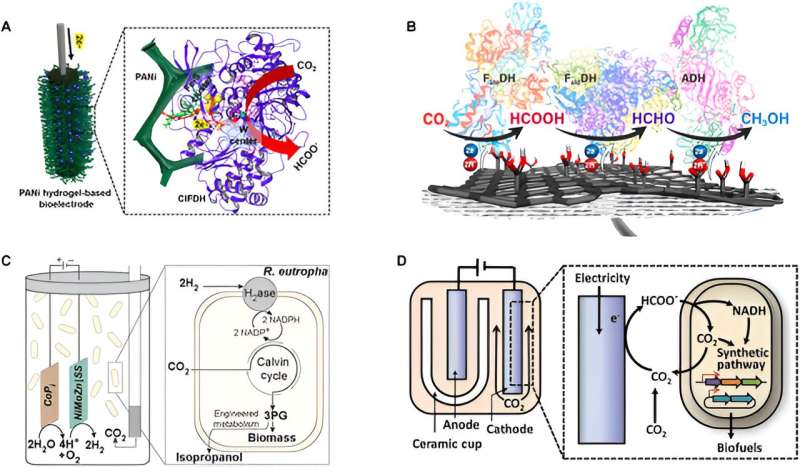This article has been reviewed according to Science X's editorial process and policies. Editors have highlighted the following attributes while ensuring the content's credibility:
fact-checked
proofread
Revolutionizing biorefineries: Advancing toward sustainable third-generation technologies in CO₂ utilization

The evolution of biorefineries, shifting from sugar-based and biomass feedstocks to third-generation (3G) technologies, marks significant progress toward sustainable development. 3G biorefineries use microbial cell factories or enzymatic systems to convert one-carbon (C1) sources such as CO2 into value-added chemicals, powered by renewable energies.
Despite the potential of native C1 assimilating microbes, challenges like low carbon fixation efficiency and limited product scope hinder their scalability. Heterotrophic microorganisms, engineered through synthetic biology and computational tools, offer a promising solution to these challenges. The current research focuses on enhancing the efficiency of C1 fixation and productivity of desired compounds, with chemo-bio hybrid systems leveraging electricity and light as emerging strategies.
In October 2023, three researchers from Hangzhou, China, published a review article titled "Design and Construction of Artificial Biological Systems for One-Carbon Utilization" in BioDesign Research. In this review, significant advancements over the past decade in the development of third-generation (3G) biorefineries are discussed.
These refineries focus on using one-carbon (C1) sources such as CO2, methanol, and formate, harnessing artificial autotrophic microorganisms, tandem enzymatic systems, and chemo-bio hybrid systems. This approach could revolutionize biotechnology, offering sustainable alternative strategies for industrial production.
Central to these developments are natural CO2 fixation pathways, which have been instrumental in engineering artificial systems for heterotrophic microorganisms such as E. coli and Pichia pastoris. Despite this progress, challenges such as energy imbalances, low carbon fixation efficiency, and the absence of native methanol assimilation pathways in certain heterotrophs still remain.
Chemo-bio hybrid systems, which combine electrocatalysis and biocatalysis, show promise for efficient CO2 conversion. However, issues such as maintaining metabolite stability and enzymatic activity still need addressing.
Overcoming these challenges is essential for the success of these artificial biological systems in C1 utilization, with potential transformative impacts on various industries, including pharmaceuticals, agriculture, and food production.
More information: Wei Zhong et al, Design and Construction of Artificial Biological Systems for One-Carbon Utilization, BioDesign Research (2023). DOI: 10.34133/bdr.0021
Provided by TranSpread




















